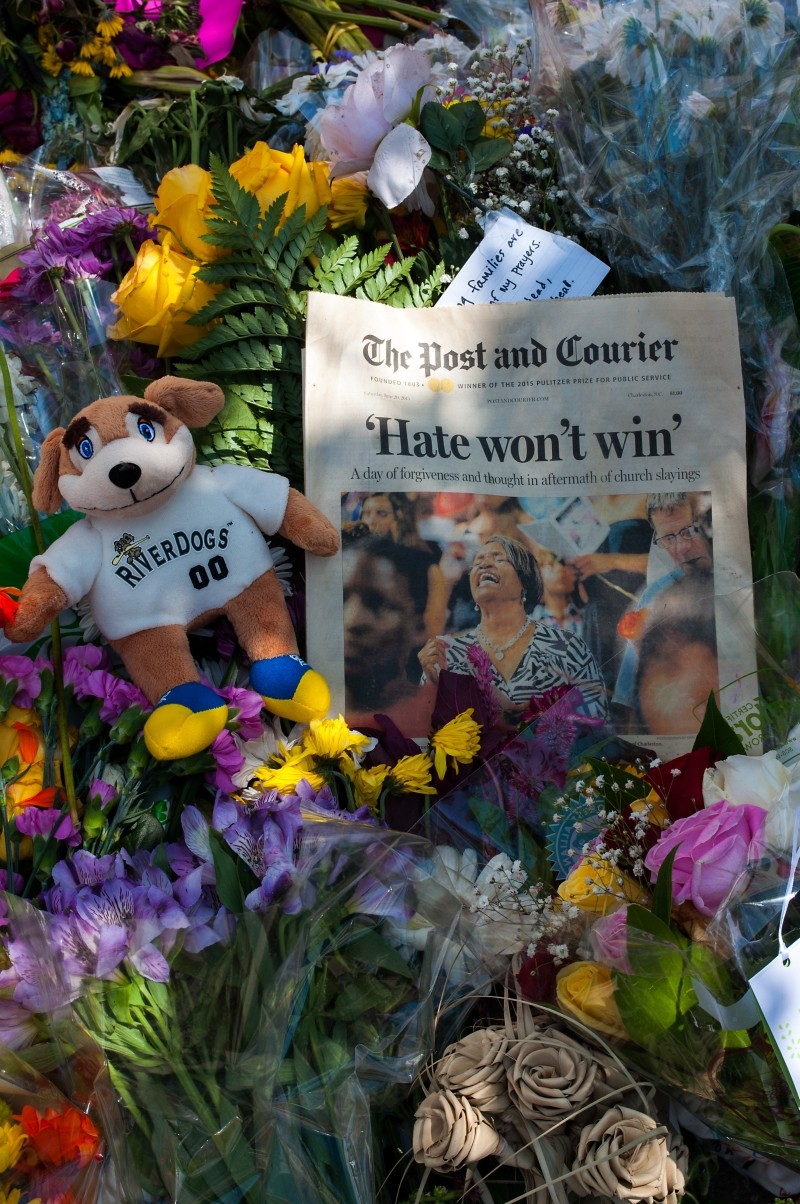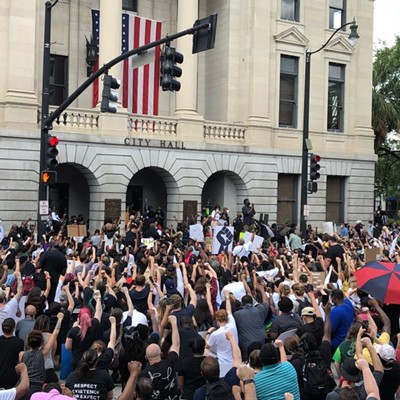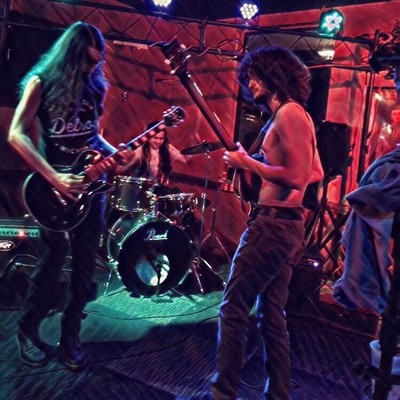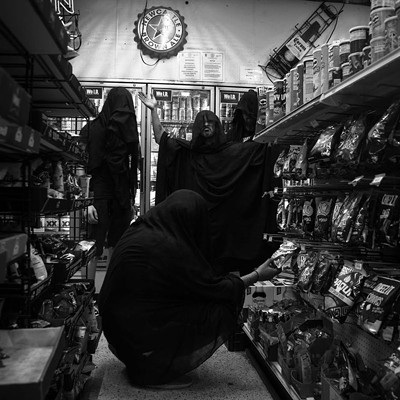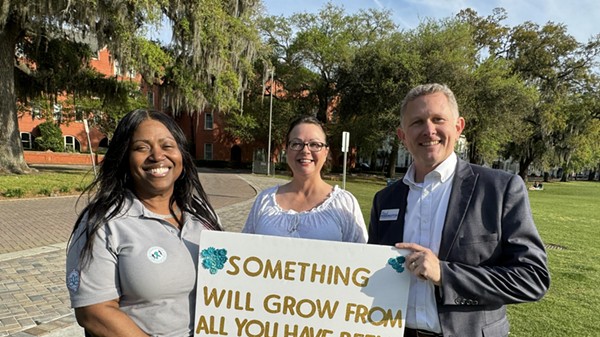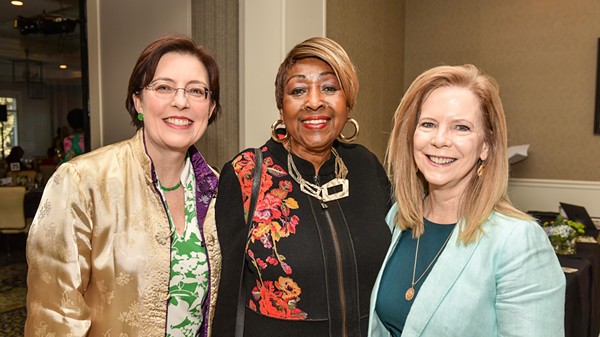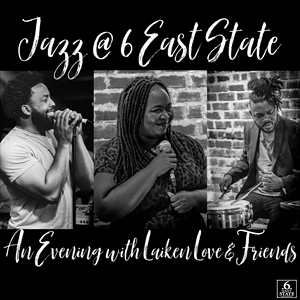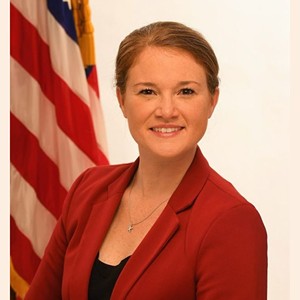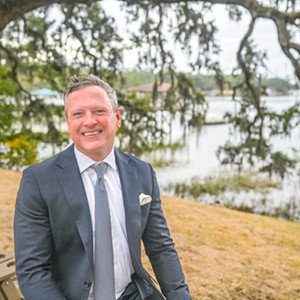ALMOST EIGHT YEARS to the day prior to Dylann Roof murdering nine worshippers at a historically black church in Charleston, nine other people were also victims of an unimaginable tragedy in that city.
On June 18, 2007, firefighters now remembered as the Charleston Nine died responding to a fire in a furniture store. Their solemn memorial on Highway 17 will now be echoed by a memorial to the Emanuel Nine, all the way across the peninsula.
Clearly, being shot down in your own church by a twisted, racist terrorist is not the same as a firefighter dying in the line of duty. I don’t mean to conflate the two.
But first hearing the news, I couldn’t help but be freaked out by the coincidence.
And I couldn’t help but wonder what it means to Charleston—a city I’ve come to know and love—that the last two major national headlines they’ve received were about the mass deaths of nine people.
I didn’t have to wonder long. The whole world saw over this past weekend a heart-stirring outpouring of solidarity, hope, determination, and—perplexing to some observers—forgiveness.
The image of thousands of people of all races and backgrounds—including Charleston native Stephen Colbert— joining hands across the iconic Ravenel Bridge will last forever. Certainly much longer than anyone will remember what Roof looks like.
I was initially horrified that this beautiful, gracious city, home to the most polite and courteous humans I’ve ever met, would be the site of such barbarity.
Then I realized there is no city in the world better suited to rise above it.
And I realized it was oddly, perfectly appropriate that what was once the seat of the U.S. slave trade— about half of all African Americans had at least one ancestor brought to Charleston, S.C., to be sold into slavery—might also host such cathartic redemption.
Charleston’s nickname “The Holy City,” while actually referring to the large number of steeples visible on its skyline, has never been more appropriate.
But as #CHSlove was in effect, other hashtags took form: #TakeDownTheFlag and #TakeItDown.
Now, I’m just old enough to remember when down here it was usually simply called “the rebel flag.” In mainstream (white) pop culture at the time, that flag was used to express defiance of authority. Any authority.
English punk bands plastered rebel flag stickers on their guitars and guitar cases. Harley riders sported rebel flag patches on their jackets. The Allman Brothers—one of the first racially integrated rock bands—sometimes flew a rebel flag onstage.
Hell, them Duke boys rode all over Hazzard County with a big-ass rebel flag emblazoned on the General Lee.
And Waylon assured us they were just good ol’ boys, never meanin’ no harm.
Of course, the dark side of the rebel flag’s outlaw symbolism is the fact that it really only became widespread down here during the 1950s and 1960s as a symbol of segregationists and the KKK, in defiance of federal integration mandates.
The average Confederate soldier probably never laid eyes on it, usually fighting under his own state flag or maybe a “Secession Banner” tailored to his unit.
Times change. People change. A younger generation of white people, much more racially aware, associates the Confederate flag with racism and nothing else. (I operate on the very safe assumption that African-Americans have always seen it that way.)
As I write this, Gov. Nikki Haley has called to ban the Confederate battle flag from all government sites in South Carolina. And by the time you read this the flag itself will be as good as gone, a non-issue.
So the piece of cloth will come down without a fight. After the cloth is gone comes the real fight. The hard work of self-searching. Of finding real solutions. And yes, of forgiveness.
We’ll need all that to deal with racism. We’ll also need it to deal with the next mass shooting, wherever it may be and whatever its motivation.
And the one after that.
And the one after that.
As much as we pray that this massacre will be the last one, it likely won’t be.
As much as we want to think Charleston is the tipping point, many of us thought the same thing after Newtown, only to be bitterly disappointed.
Next time there probably won’t be as obvious a vector for our grief and anger as a flag.
Mass shootings always target society’s most sensitive areas: Kindergartens, churches, college campuses, minority communities.
That’s what terrorists do: Target the soft spots.
As the mourning congregation of Emanuel AME is trying to tell us, the road to redemption is long and has many hardships. Many terrors.
The key is to not lose your soul along the way. And to be strong at the soft spots.
Here’s the thing: The awe-inspiring display of solidarity and optimism in Charleston that’s going on right now? That’s the spirit of the South, too.
I’m convinced that’s the spirit that will triumph in the end.

